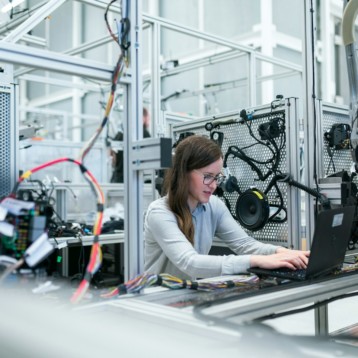With the advent of accessible 3D printers, as well as the massive technological innovations and metaverse buzz over recent years, 3D modelling has become an increasingly valuable skill.
In the past, 3D modellers had relatively constricted career paths, entering product design and engineering as primary routes. Here, we explore some of the alternative ways you can take to turn your 3D modelling skills into money.

1. Try architectural design
Whilst the majority of this list focuses on routes that differ from traditional careers, it’s sensible to include at least one standard salaried job role. Architectural design is often neglected by 3D modellers when looking into the next steps of their career, partly because it doesn’t seem particularly glamorous. However, what the role may lack in glamour, it makes up for in funding.
Architecture is one of the highest-paying industries, which is reflective of the years it takes to become a fully qualified architect. However, many architects rely on 3D modellers to help create polished renders of their vision, meaning some of those funds trickle to 3D specialists in this field. Whilst salaries vary globally, average entry wages are consistently above $45,000 a year. A great option for monetising your skills.
2. Sell your pre-made assets
Whether you have already entered the industry and want to make some extra income or are just trying to break in and need to develop a portfolio, working on models in your own time and selling them online can be a great way of earning extra income. 3D models are required by a vast number of industries and, depending on quality or complexity, some models can be sold for thousands of dollars at a time.
If you have a bank of pre-made assets you want to sell or are interested in how to follow this route, it’s worth analysing the models on the market to gauge what work sells and what pricing you can expect. There are plenty of different 3D model marketplaces out there with varying payment models and approaches, so make sure to do your research before picking the right one for you.
3. Make a video game
The video game industry is estimated to reach a global market value of $221 billion by the end of 2022, making it larger than the film, television and music industries combined. This growth is expected to continue throughout the next decade, proving that if you have the skills, getting into video games now could be a better time than ever.
All 3D video games require modelling, meaning there are a host of opportunities available to enter the space. If you’re interested in creating a game, you can join an existing team, learn the other skills you need to build your project alone or hire a game developer to join your team and create your vision. Whatever happens, as long as the game you are working on has a 3D element, your modelling skills will be invaluable.
4. Operate on a freelance basis
This option can be particularly appealing for those who want to get away from the nine-to-five grind of a regular salaried job. Freelance work can be incredibly freeing and grant the opportunity to work on a variety of different projects, though, it does come with other challenges like sourcing your work and monitoring your tax compliance more closely.
Many 3D modellers rely on many freelance work websites like Fiverr, Upwork, and People Per Hour to simplify their business development process. However, it’s important to remember that to become fully self-sufficient on these platforms, it usually takes time to build up a good reputation and several positive reviews, so don’t expect to transfer to this way of living immediately.
5. Create miniatures using Kickstarter
If you love sculpting intricate miniatures and 3D assets, then you may also want to consider funding the production of your minis through a crowdfunding platform like Kickstarter. Kickstarter is central to the growth of the tabletop gaming industry and as part of that, it remains a hub for funding the development of new miniatures for hobbyists to collect and paint. This provides a unique angle for 3D modellers to monetise their work whilst creating a die-hard audience and fanbase.
It’s important to preface that no Kickstarter is guaranteed to succeed and the work that goes into marketing, production management and fulfilment is extensive, so you should think carefully before pursuing this route. As always, viewing other successful projects and emulating them is key if you want to replicate their success.
Regardless of the path you take, 3D modelling skills are going to be invaluable over the next decade as technology advances and we become increasingly reliant on viewing 3D digital recreations of everyday objects. Whatever your experience, developing this skillset will put you in a great position, it’s just a matter of choosing how to turn that knowledge into a livelihood.










